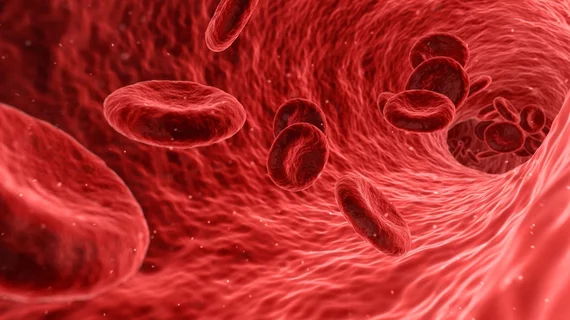New ultrasound imaging material spots blood clots that may lead to deep vein thrombosis
A newly developed imaging material recently earned praise for identifying and potentially treating life-threatening blood clots, according to research published in Advanced Healthcare Materials.
The particles—nanopeptisomes, or nPeps—are comprised of minuscule fragments, similar to liquid Teflon, that bind to the surface of blood clots to form an “excellent” ultrasound imaging contrast. Penn State researchers noted current imaging methods lack the resolution to pinpoint the problem spots required to detect deep vein thrombosis.
"Ultrasound isn't great for diagnosing DVT," team lead Scott Medine, an assistant professor of biomedical engineering at Penn State, said Thursday. "It can tell you that a region of fluid flow may look odd, which might be related to a clot—but maybe not. You follow up with blood tests to look for specific factors, and, together, you might be able to diagnose a clot."
Deep vein thrombosis occurs when clots form in deep veins and, if left untreated, can cause deadly pulmonary embolisms. Thus, it’s crucial to be able to quickly detect, monitor, and treat the condition, Medine explained.
While the contrast did point directly to where blockages were forming, the group ran into trouble when applying it to artificially induced blood clots.
They believe the particles were disrupting clots’ growth mechanisms and actually dissolving blockages in some instances. Medine and co-investigators are further refining their technique to prep for additional testing.
“While we don't understand the underlying mechanism yet, it's clear that these particles can image and help treat clots in real time,” Medina concluded.

